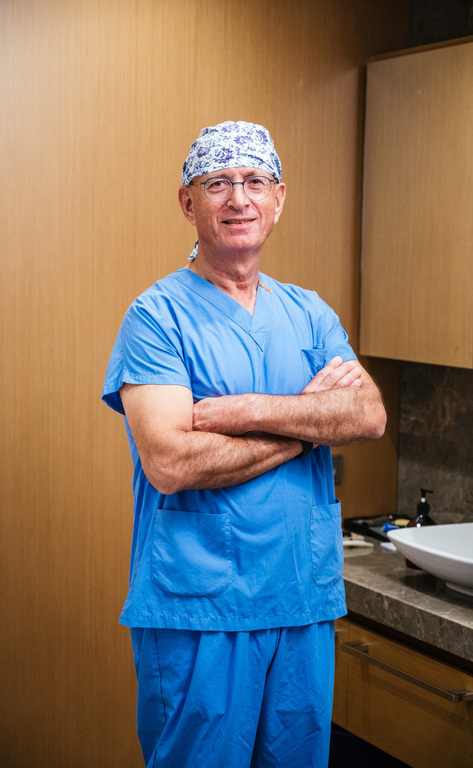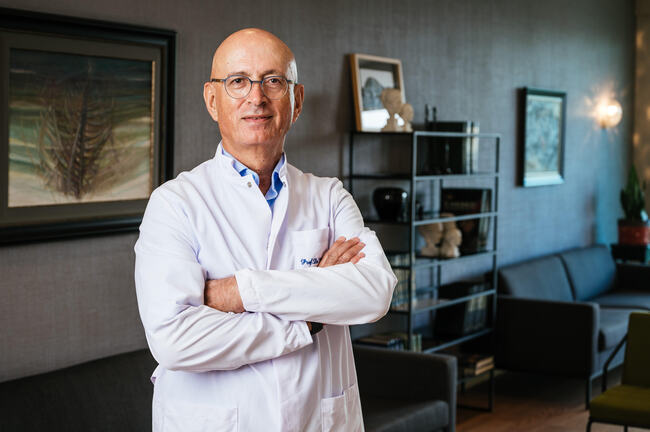Leading the Charge in Spinal Healthcare: Prof. Dr. Yunus Aydın’s Innovations in Microdiscectomy and Spinal Stenosis Surgeries
Prof. Dr. Yunus Aydın is a luminary in the field of spinal health, delivering exceptional medical expertise and catalyzing significant advancements in the treatment of back pain with his profound surgical experience and dedication to spinal care.
Amassing an impressive portfolio with more than 2800 aneurysm operations and over 400 AVM procedures, Prof. Dr. Yunus Aydın is lauded for his customised approach to healthcare, prioritising patient satisfaction and well-being throughout their recovery journey.
The Spinal Surgical Revolution by Aydın
The Spinal Surgical Revolution, introduced by Prof. Dr. Yunus Aydın, represents a significant leap in spinal surgery, presenting focused treatments for spinal stenosis and spinal cord compression that eliminate the need for metal, thus considerably reducing tissue harm. This encompasses same-day interventions for disc herniations, conservative strategies for cervical disc herniation, and efficient tactics for managing spinal canal stenosis resulting from cervical calcification.
Implementing a unilateral tactic for bilateral decompression in spinal stenosis, Prof. Dr. Yunus Aydın has successfully applied this strategy in over 4,000 cases for more than two decades. “Our goal is to preserve the natural structure and mobility of the spine while providing more room to squeezed spinal nerves,” he asserts. He discusses the frequency of spinal stenosis in the elderly and the surgical trend towards instrumented techniques, which involve comprehensive, invasive surgeries, thus extending the patient’s recuperation time. He champions more succinct, less invasive operations for older patients to diminish post-surgical complications, stressing the importance of prompt post-operative mobilisation.
“By using a unilateral approach, on the symptomatic side, we can decompress the spinal canal stenosis and clean disc herniations effectively, minimizing the risk of ‘Adjacent Segment Disease’ and ensuring a faster return to normal life for our patients.” This method is also suitable for treating multi-level stenosis through a single incision, without jeopardising the spine’s structural strength.

Innovating Natural Access on the Spinal Side
For spinal stenosis treatment, Prof. Dr. Yunus Aydın utilises a groundbreaking technique that bypasses the drawbacks inherent in traditional screw and rod systems. While these conventional approaches are reliable for addressing traumatic fractures or spinal issues related to tumour growth, they can modify the spine’s natural biomechanics, often leading to subsequent surgeries.
With extensive experience from over 10,000 surgeries, Prof. Dr. Yunus Aydın’s approach involves creating a natural access on one side of the spine to carry out the necessary surgical interventions without compromising spinal stability. This method maintains joint functionality and avoids the emergence of adjacent segment disease, with most patients being discharged within a day of their spinal operation.
Facilitating Rapid Recovery with Minimally Invasive Techniques
“The key to successful spinal surgery lies in respecting the integrity of the spine’s supporting structures,” Prof. Dr. Yunus Aydın notes. By employing advanced surgical instruments such as the high-speed drill and Kairison bone cutter, these procedures can be conducted in a manner that is less invasive, minimises bleeding, and maximises efficiency. Additionally, by preserving the yellow ligament in microdiscectomy, the operation reduces tissue damage, thereby decreasing the chance of nerve adhesions and the risk of failed back surgery syndrome.
Patients undergoing these avant-garde spinal surgeries can expect significantly shorter hospital stays, with many being discharged either on the day of or the day after surgery. The majority of patients resume their regular activities within 15 days, evidencing the minimally invasive nature of these surgical techniques.

